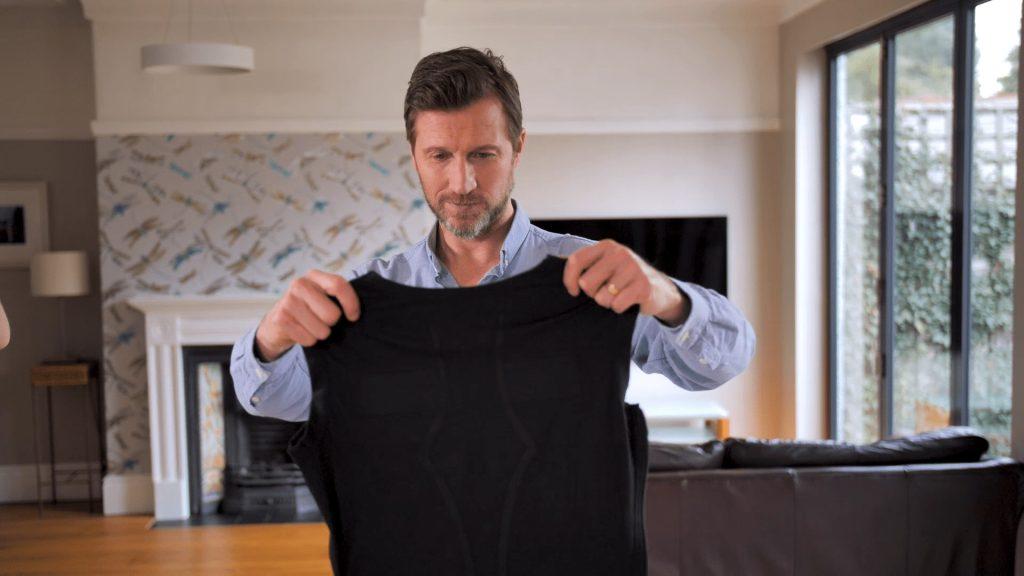Browsing online we’re seeing more and more videos showing with captions – what’s this all about?
This is due to the rise of mobile video which is growing massively.
One of the main problems for marketers is that mobile users may not always have the sound turned on – or want to turn it on. So although the visual message may come across – crucially half of the video could be missing.
So how do you get your message across if your video is voiceover or interview-based? This is the same issue, whether filmed or animated video production.
Captions are a great way of letting people preview the video content, and letting them decide to watch with the volume turned on. Or letting them take on board the full message when the volume isn’t an option. On screen captions are also much more accessible for anyone who cannot hear for any reason. We’ve written more about making your video accessible and inclusive here
Making the assumption people will always listen from the start is a mistake.
However, sometimes you may not want or need captions, and it’s not always straightforward.
3 Main Types of Captions
Animated Captions – inbuilt into the video that just shows highlights and keywords
Open Captions – like subtitles but can’t be turned on and off – they’re embedded within the video. Also known as hardcoded
Closed Captions – abilities to turn the subtitles on and off, set by the video player.
Social Video
If your marketing is very social media-based, for example, Facebook adverts, (and who would blame you!) hundreds of million hours of video per day are watched on Facebook. There can be a lot of silent video playback, so you’ll want to incorporate full hardcoded sub captions, or make your visuals very self-explanatory. The latter is only really possible with animation or motion graphics based videos.
And so now more often on Facebook and Youtube, we do see full sub captions are being used. Which means people can still get the content, but without having to turn the sound up – it’s a great user-focused approach. These can be branded nicely, while still making the video more accessible.
For those heavily invested in social video, Open captions are a great option, as it gives you more flexibility with the design than video player generated closed captions.
This means your video will never show without captions by mistake, the full message will always get across.
Obviously, they still need to be clear, so you can’t be crazy with font choice or colour, but you can be sure they don’t overlap with any visuals, the font is suitable, and you have full control of the process.
If you’re still dabbling with social video production – then Closed Caption system is a great way to start and increase engagement.
Website video
For your website, you may not need harder subtitles. If your service or product is heavily B2B – you may still have a good majority of desktop users, who have access to speakers or headphones more easily.
So for a website video or a video just for presentations, you may find that a few key highlight messages, animated nicely do the trick along with the voiceover. It’s still advised to add a subtitles file to the video pl ayer to give the viewer the option.
The best to way to find out if your visitors are coming by mobile, tablet or desktop, is to check your website analytics for the screen size and device used most frequently. You can also check the time on page – to see if you’re putting off mobile users with your site.
There are a few downfalls
It can take a bit of effort and knowledge required to produce the right files for Closed Captions – it requires generating an SRT (or similar) file, which is basically a text file of the script that is formatted so that each line is associated with a time code – so if you’re not familiar it can be a little daunting and time consuming.
Facebook and Youtube now offer automatically generated captions – woohoo! But sometimes what it hears is incorrect, so this is not a foolproof method. Especially when you’ve spent time and money producing a video to generate sales (imagine loads of a typos in a proposal!).
Sometimes captions can appear over key visual content in the video if they’re an afterthought.
Youtube also offers its own auto captions, but the English is not always correct! So it needs checking thoroughly.
If you’re not up for a DIY approach, You can hire companies to easily make a perfect transcript if you’re getting errors, then upload that SRT file to youtube or Facebook. This will be more professional and save you time.
If you choose to have animated captions that are ever present and part of the video design – then it’s crucial they are timed well for those who are listening and match the voiceover – as hearing and seeing them as different messages will create a little confusion.
This seems obvious, but marketers are still doing this! It’s so difficult to take one message fully on board if you’re hearing another.
Getting started
So to get started, first look at your analytics and your marketing efforts. Is your audience website and desktop based or do you drive large amounts of traffic through social media and mobile?
After you have a clear idea of your own users you can decide what level of captions to use.
It’s good to know this info at the beginning of a video project, so that nothing is overlapping that area of the screen, or that the video producer can add animated highlight captions which capture the message in an elegant way.
If you already have videos online on youtube or Facebook – see if the automatically generated captions work for you – and there you go, you’ve already increased watching potential!
In the meantime – check out our newly updated portfolio, and see a wide range of web videos with animated captions!



